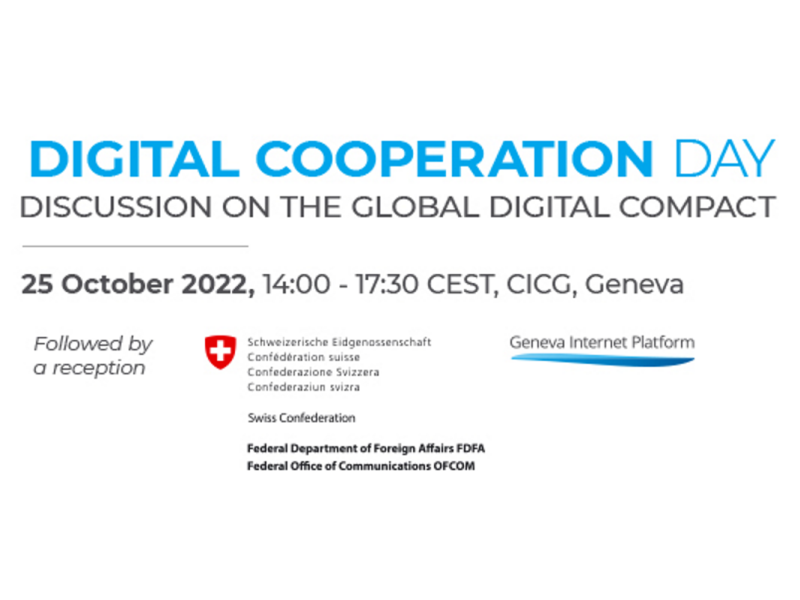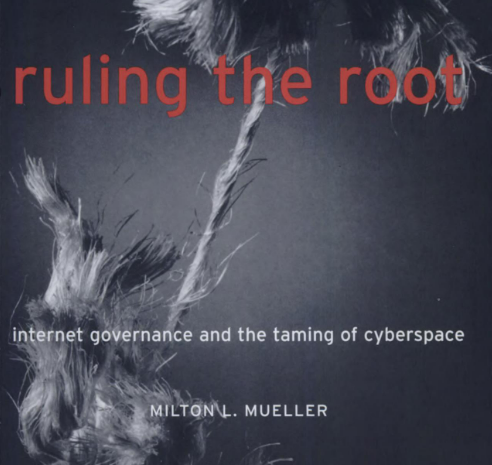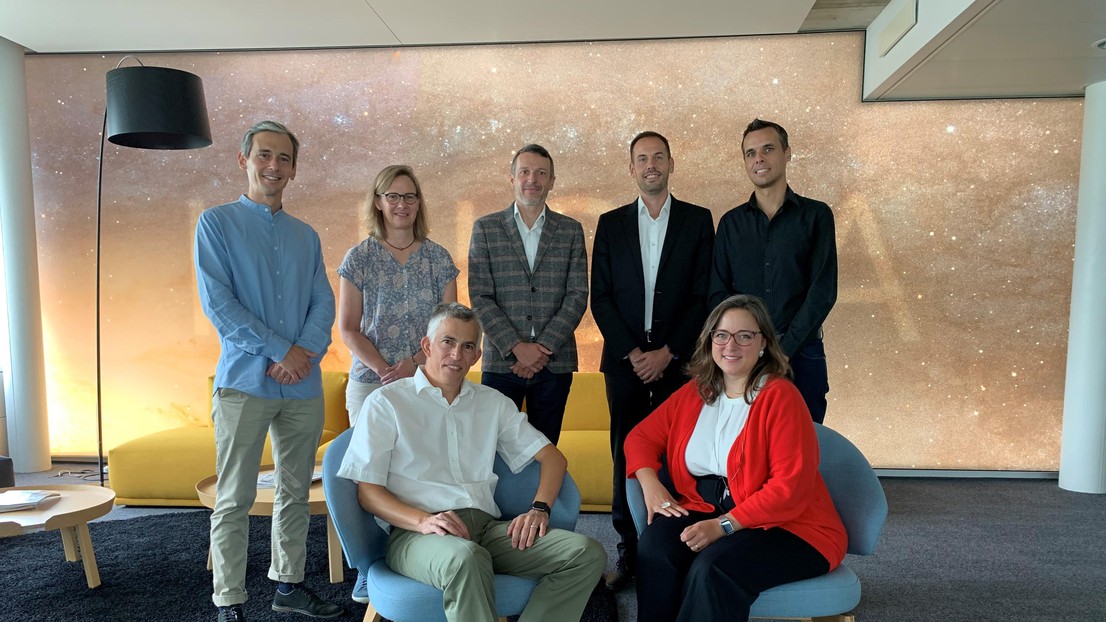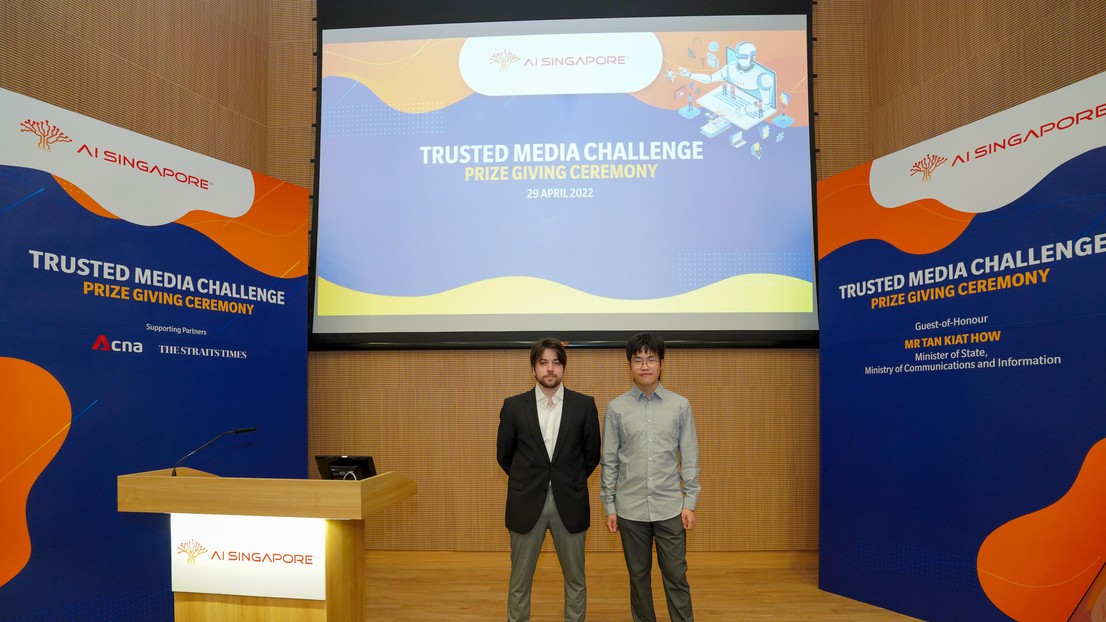
On the Digital Cooperation Day, the Geneva Internet Platform (GIP) will present the findings of the second edition of the Geneva Digital Atlas which maps overall digital developments in International Geneva. Based on this mapping, the discussion will be conducted with the UN Secretary-General’s envoy on technology (a key catalyst of the process towards the GDC) on priority policy questions for actors in Geneva. The discussion will include answers that the vibrant Geneva scene can provide to the global community.

Call for Applications (CfA): Become a Digital Trust Policy Fellow at C4DT and write cutting-edge, technology-grounded policy papers on current technological challenges in the area of digital trust! Check out our program website for more information. Deadline is November 1, 2022.

With the discussion of this book, the C4DT begins a new publication series, the Digital Governance Book Review: Hereafter, every month, we will summarize and contextualize a book we consider relevant. The book will be either a classic, whose lessons are worth recalling, or a new publication our readers should become aware of. Over the next two years, we plan to present approximately 25 books that we think will help our readers understand the essence of digitalization.
We begin the series with the now classic 2002 book by Milton Mueller Ruling the Root. Internet Governance and the Taming of Cyberspace. Cambridge, Mass.: MIT Press, 317 pages.
For our weekly meeting-presentation I took the stackoverflow-stats from 2022. Then with the team we went through it and discussed the different statistics. First I thought we’ll get bored quickly, but after 1h30 I had to push the meeting to other subjects. So here are some things we found: Developer Profile Learning how to code: (…)
Have you ever tried using ssh on a train? Or closed your laptop and found that all of your remote session are now frozen? Or using it via a crowded antenna tower? In all theses cases, ssh fails to work as expected. This is due to the fact that common ssh connections are transported via (…)
One of the most well-known framework to create cross-platform apps is Electron. In it you write your app in Javascript or Typescript. This code runs in a node environment and the GUI is displayed in a browser. Like this, the app can be ported easily to different operating systems. Even mobile systems are supported. One (…)

Already involved with EPFL, especially with the Center for Digital Trust (C4DT), the Mobility lab Sion Valais, the EPFL FORUM, the Applied Machine Learning Days and the supervision of master’s degree internships, the Swiss Post is seeking to accelerate the start of collaborations with the entire EPFL ecosystem by joining the EPFL’s one-year acceleration program KNOVA.
State-of-the-art architectures for modulation recognition are typically based on deep learning models. However, recently these models have been shown to be quite vulnerable to very small and carefully crafted perturbations, which pose serious questions in terms of safety, security, or performance guarantees at large. While adversarial training can improve the robustness of the network, there is still a large gap between the performance of the model against clean and perturbed samples. Based on recent experiments, the data used during training could be an important factor in the susceptibility of the models. Thus, the objective of this project is to research the effects of proper data selection, cleaning and preprocessing of the samples used during training on robustness.

Contact tracing is a time-proven technique for breaking infection chains in epidemics. Public health officials interview those who come in contact with an infectious agent, such as a virus, to identify exposed, potentially infected people. These contacts are notified that they are at risk and should take efforts to avoid infecting others—for example, by going into quarantine, taking a test, wearing a mask continuously, or taking other precautionary measures.
Recently, deep neural networks have been applied in many different domains due to their significant performance. However, it has been shown that these models are highly vulnerable to adversarial examples. Adversarial examples are slightly different from the original input but can mislead the target model to generate wrong outputs. Various methods have been proposed to craft these examples in image data. However, these methods are not readily applicable to Natural Language Processing (NLP). In this project, we aim to propose methods to generate adversarial examples for NLP models such as neural machine translation models in different languages. Moreover, through adversarial attacks, we mean to analyze the vulnerability and interpretability of these models.
The Center for Digital Trust is an academic-industry alliance of international relevance that facilitates innovation in digital trust services and products. It brings together 15 industry partners, 43 EPFL laboratories, civil society, and policy actors to collaborate, share insight, and to gain early access to trust-building technologies, building on state-of-the-art research at EPFL and beyond. (…)
C4DT provides its partners access to knowledge and expertise distributed over EPFL’s research labs in the following trust-building technologies pillars. Furthermore, its community builds on 5 application verticals to illustrate how these technologies contribute to solving the challenges of achieving trust in the digital world.
5 service domains respond to partners’ needs in terms of collaboration and community, education, open-source state-of-the-art prototype showcasing and projects
A fast and efficient blockchain created by the lab of prof. Bryan Ford.

The Federal Council described cyberattacks as “a serious threat for Switzerland’s security and economy” and proposed a law for a reporting obligation for cyberattacks on critical infrastructures in its press release of January 12th 2022.
This 1-day conference, organized by C4DT in collaboration with UNIL’s Faculty of Law, Criminal Sciences and Public Administration (FDCA) and Trust Valley, will bring together government, public and private sectors and academia to discuss the proposed reporting obligation. Through case studies of past cyberattacks in Switzerland and simulations of possible critical infrastructure attacks, we aim to raise awareness of the cyber-risks with communal, cantonal and federal authorities, critical infrastructure providers as well as all organisations impacted by this law.
For more information about the event (speakers and agenda) please click below.
As we all know, writing tests when developing software is very important¹. Indeed, most modern programming environments have frameworks to write and run tests, sometimes even in the standard tooling: pytest for Python, cargo test for Rust, go test for Go, etc. Let’s set aside the actual writing of the tests themselves for a moment, (…)
In response to the COVID-19 disease that has stormed the world since early 2020, many countries launched initiatives seeking to help contact tracing by leveraging the mobile devices people carry with them. The Federal Office of Public Health (FOPH) commissioned the effort for Switzerland, which resulted in the official SwissCovid application and infrastructure. This document (…)
I’m still working on my fledger project. It’s goal is to create a node for a decentralized system directly in the browser. For this I want the following: Works in the browser or with a CLI: have a common codebase but use different network implementations Direct browser to browser communication: use the WebRTC protocol for (…)
The objective of the TMM project is to identify, at an early stage, the risks associated with new technologies and develop solutions to ward off such threats. It also aims to assess existing products and applications to pinpoint vulnerabilities. In that process, artificial intelligence and machine learning will play an important part. The main goal of this project is to automatically identify technology offerings of Swiss companies especially in the cyber security domain. This also includes identifying key stakeholders in these companies, possible patents, published scientific papers.
For a long time I tried to understand what Proof-of-History brings to the table. What is it useful for? What problem does it solve? At the beginning of may 2022, Victor Shoup, who is a renowned cryptographer and currently working at DFinity, took a deep dive into Proof of History. He wrote an opinion paper on (…)
Lightarti is a mobile library developed in Rust, in collaboration with the SPRING lab at EPFL, the Tor team, and the original Arti library team.

Two EPFL computer scientists have taken home a major prize in Singapore’s Trusted Media Challenge, a five-month long competition aimed at cracking the code of deepfakes.
![[FR] DIS, POURQUOI? – La crypto (1/5)](https://c4dt.epfl.ch/wp-content/uploads/2022/04/ofzeu6-25815337.image_.jpg)
Une série d’épisodes traitant de la crypto dans l’émission “DIS, POURQUOI?”, avec Rachid Guerraoui, Professeur dʹalgorithmes en réseau et chercheur à lʹEPFL.
Course given under the GymInf program of swissuniversities by Linus Gasser.
Subjects for the course:
– why your opinion is worth money
– abusive data collection on personal devices
– protecting internet connections using TLS
– usefulness of blockchains for the decentralization of trust
– homomorphic cryptography for secure data sharing
– legislation on security and privacy in Switzerland, Europe, and elsewhere







![[FR] DIS, POURQUOI? – La crypto (1/5)](https://c4dt.epfl.ch/wp-content/uploads/2022/04/ofzeu6-25815337.image_.jpg)